It’s International Women’s Day and we just celebrated Black History Month. The perfect time to share a very special new-to-me piece that’s already been warmly received at a student’s masterclass and a recital.
While I was viewing a YouTube performance of a Gershwin piece by violinist Randall Goosby for a student’s reference, the playlist popped up this compelling interpretation of Florence Price’s “Adoration” by Goosby with pianist Zhu Wang. I got goosebumps! (no pun intended) The arranger’s name was in the YouTube description, so it was easy to verify that this very same arrangement was available on IMSLP.org.
Composed by Florence Price (1887-1953) in the 1950’s for the organ, “Adoration” was apparently discovered in 2009 in a box of her compositions that had been previously considered lost. According to IMSLP.org, the piece “failed to meet notice or renewal requirements to secure statutory copyright with no ‘restoration’ under the GATT amendments” and therefore is in the public domain. It has been arranged for violin and piano by Elaine Fine, who has generously provided it for free download and distribution under the Creative Commons license.
Get your own copy here! The arranger has also published versions for viola or cello with piano. She notes in the IMSLP description, “This piece sounds particularly nice on the viola.”
If you liked this post, you might also want to read about other Contemporary Classical Pieces for Intermediate Violin Players.
Check out my published arrangements at SheetMusicPlus.com!


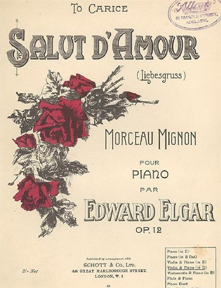 Salut d’Amour, a salon piece by Edward Elgar, is a favorite for students who enjoy its unabashedly romantic vibe and mandatory expressive shifting. I place it at advanced-intermediate Level 6, where it is technically comparable to the Accolay Concerto or Haydn Concerto in G. I teach the version in the original key of E, not transposed to D which is also available. Because Salut d’Amour is in the public domain (published in 1899), early editions in both D and E are freely available on sheet music websites like IMSLP.org.
Salut d’Amour, a salon piece by Edward Elgar, is a favorite for students who enjoy its unabashedly romantic vibe and mandatory expressive shifting. I place it at advanced-intermediate Level 6, where it is technically comparable to the Accolay Concerto or Haydn Concerto in G. I teach the version in the original key of E, not transposed to D which is also available. Because Salut d’Amour is in the public domain (published in 1899), early editions in both D and E are freely available on sheet music websites like IMSLP.org.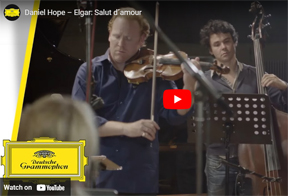
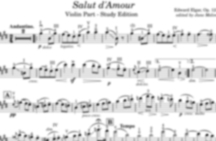
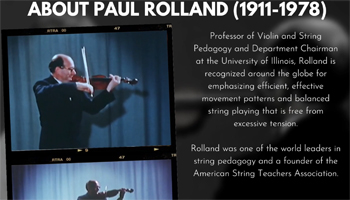 Over the holiday break from teaching, I finally completed a resolution for 2021: to rent and watch the Paul Rolland video series titled “
Over the holiday break from teaching, I finally completed a resolution for 2021: to rent and watch the Paul Rolland video series titled “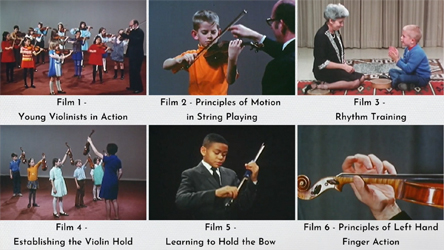
 Where
Where 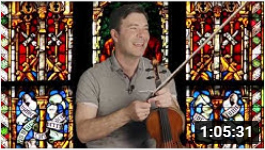 Nathan is First Associate Concertmaster of the Los Angeles Philharmonic and could clearly spend all his time just performing. But his passion for teaching has turned him into a YouTube pro. While joining his private student cohort is limited and pricey, he has posted many excellent free teaching videos, including a series on the complete Bach Unaccompanied Sonatas and Partitas for Violin. (He calls it
Nathan is First Associate Concertmaster of the Los Angeles Philharmonic and could clearly spend all his time just performing. But his passion for teaching has turned him into a YouTube pro. While joining his private student cohort is limited and pricey, he has posted many excellent free teaching videos, including a series on the complete Bach Unaccompanied Sonatas and Partitas for Violin. (He calls it 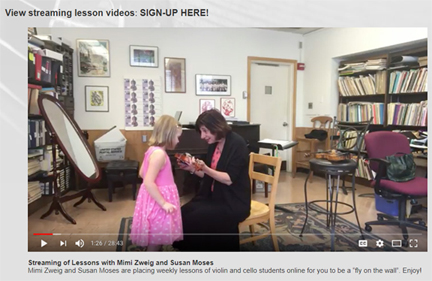 A “star teacher” is one that I would like to emulate in my teaching approach. Having attended Mimi Zweig’s Workshop for Violin Teachers, I got to learn firsthand from this master teacher and her colleagues. Mimi has generously made videos of her teaching available, for free, online. All you have to do is sign up at
A “star teacher” is one that I would like to emulate in my teaching approach. Having attended Mimi Zweig’s Workshop for Violin Teachers, I got to learn firsthand from this master teacher and her colleagues. Mimi has generously made videos of her teaching available, for free, online. All you have to do is sign up at  In 2014 I made two videos of myself trying out several intermediate-level violins and bows from
In 2014 I made two videos of myself trying out several intermediate-level violins and bows from